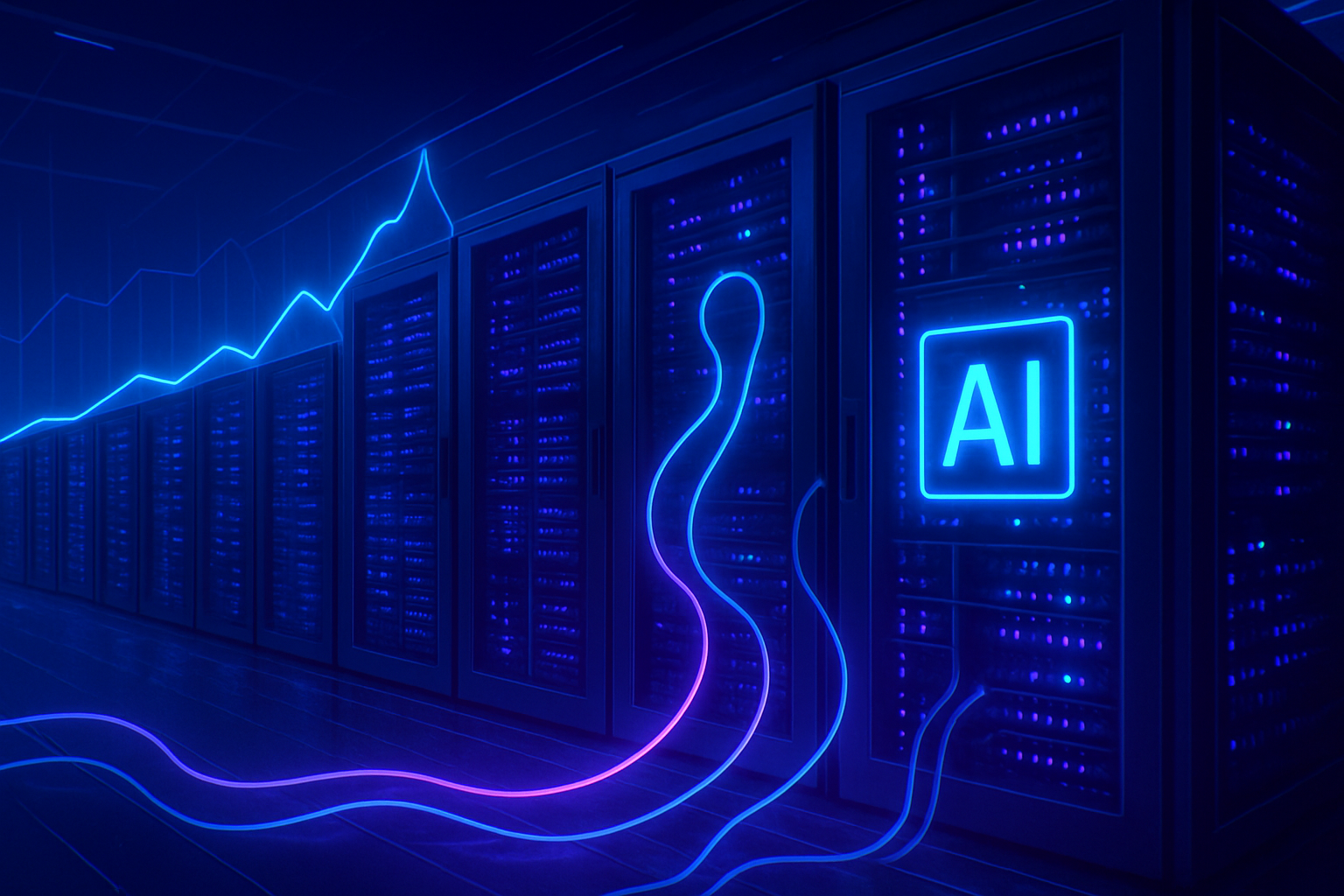An energetic turning point is emerging in the digital landscape. Artificial intelligence, rapidly expanding, could soon *consume nearly half* of the electricity used by data centers. The International Energy Agency reveals an alarming trend: the growing energy demand of AI intensifies environmental challenges. Forecasts indicate that AI players are heading towards exponential energy dependence, exacerbating *the impact of greenhouse gas emissions*. In light of this reality, the need for an energy transition becomes undeniable to manage this voracious consumption.
Energy consumption of data centers
The recent publication by Alex de Vries-Gao, a PhD student at the VU Amsterdam Institute for Environmental Studies, reveals significant insights regarding the energy consumption of data centers. According to his research, these centers could consume up to 82 terawatt-hours of electricity this year, a volume comparable to that of a country like Switzerland. By 2024, the International Energy Agency has reported that these facilities could account for up to 1.5% of global energy consumption.
Growing impact of artificial intelligence
As artificial intelligence companies scale up, the demand for computational power intensifies. Language models such as ChatGPT require substantial computational resources. This need has led some industry players to consider autonomous energy production to meet their requirements. De Vries-Gao emphasizes that not only is energy demand rising, but potential increases in electricity prices could also occur.
Methodological assessments
To estimate the electricity consumption of AI providers, de Vries-Gao analyzed data from several sources. He examined publicly available electricity consumption reports and studied various types of devices used to operate AI applications. From this data, he was able to establish estimates regarding the energy consumption of different companies in the sector.
Future perspectives and environmental concerns
The anticipated increase in demand could see the use of AI applications reaching half of the total energy consumption of global data centers. The environmental impact should not be underestimated, especially if these facilities power their services through the electrical grid. The majority of electricity still comes from non-renewable sources, primarily coal combustion, leading to an increase in greenhouse gas emissions.
Diverse contributions of data centers
Data centers do not only process AI requests. They are also essential for storage and analysis of data in the field of cloud computing and for bitcoin mining. These varied uses further increase the pressure on existing energy infrastructures, necessitating critical reflection on their sustainability.
Economic aspects
The potential rise in energy costs resulting from this growing consumption raises concerns about the economic viability of AI companies. Firms must navigate between the rapid growth of their capabilities and the financial implications of their energy consumption. This dilemma could influence future development and investment strategies in this sector.
Companies are beginning to explore alternatives such as using renewable energy to power their data centers. This could help mitigate their environmental impact while meeting growing demand. At the same time, collaboration with organizations like the Linux Foundation could enhance efficiency and reduce costs.
Conclusion of current estimates
Considering the available information, it appears that artificial intelligence could soon take a predominant share in the energy consumption of data centers worldwide. These developments necessitate a swift response from the sector to preserve the sustainability of energy practices and reduce greenhouse gas emissions. Acknowledging this challenge can guide future efforts towards a more responsible energy transition.
Common questions about the energy consumption of data centers and artificial intelligence
What are the forecasts regarding the energy consumption of data centers by artificial intelligence?
Estimates suggest that artificial intelligence could consume up to 50% of the energy used by global data centers soon, due to the rapid increase in demand for AI applications.
How does artificial intelligence increase electricity demand for data centers?
Advanced language models and other AI applications require enormous computational resources, leading to a growing energy demand to power servers and sophisticated hardware.
What are the environmental impacts associated with the increase in energy consumption by AI data centers?
An increase in energy consumption could lead to a rise in greenhouse gas emissions, especially if the electricity comes from non-renewable sources like coal, exacerbating climate change.
What measures can be taken to reduce the carbon footprint of data centers powered by artificial intelligence?
Companies can invest in renewable energy, improve the energy efficiency of their infrastructures, and optimize AI algorithms to reduce energy demand.
Are there significant differences in energy consumption between different artificial intelligence service providers?
Yes, energy consumption varies among providers, based on the design of their data centers, the efficiency of their hardware, and their operational practices.
What is the long-term outlook regarding the impact of artificial intelligence on the energy sector?
Long-term, the need to monitor and manage the energy consumption of AI data centers will be crucial to balance technological needs with environmental imperatives.
Do artificial intelligence companies share information about their energy consumption?
Recently, some companies have been less transparent about their energy consumption, making it difficult to fully assess their energy impact.
What types of data are used to estimate the energy consumption of AI data centers?
Researchers use public reports on electricity consumption, statistics on purchased and sold equipment, as well as analyses of chip performance to make their estimates.






